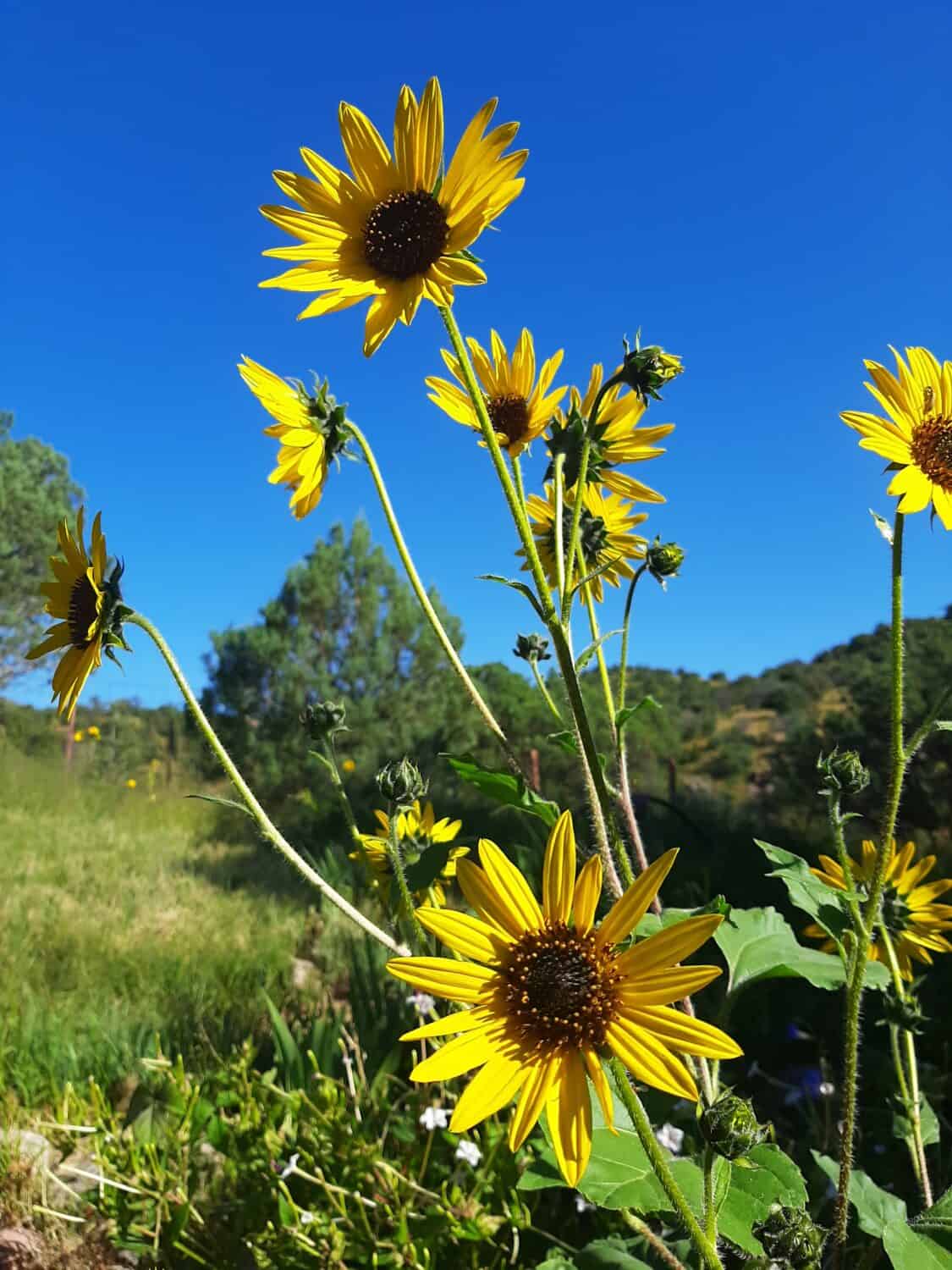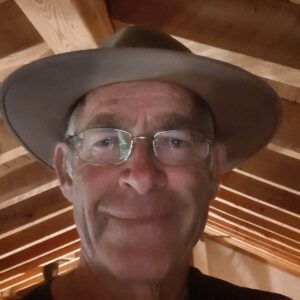There is a sea of golden yellow, towering above the garden this year. When seen along the roadsides, these yellow orbs of delight are maybe five feet tall on a wet year. They made a home in our garden last year, and happy with garden soil, they grew to ten feet tall. This as a result of what we thought was a really good monsoon season with over 15 inches of rain.
This year though, with our crazy drenching summer, the annual sunflowers again took over the garden space but grew even taller, towering a good 12 feet in the air. The menagerie of life that plied those flowers was amazing. Queens and Monarch butterflies danced from flower to flower. Two-tailed Swallowtails, Dog-faced and Dainty Sulfurs and an amazing mix of other nectar seeking butterflies filled the garden while the hummingbirds really ruled the skies. I had never realized or noticed before how often the hummers worked the sunflower patch. They provided a constant dance in the sky. Now with fall being the season, the seed heads are filling out and the hummingbirds giving way to the Lesser Goldfinches. The Goldfinch songs as they merrily pick at the seeds are both soothing and entertaining.
If one pays close attention to these annual giants in the morning, they will notice that all of the flowers are facing east to welcome the morning sun. As the sun moves through the sky, the flower heads move to track the light. I have never seen them move after sunset facing west, but by morning they are all lined up waiting for dawn on the eastern horizon. Bees have been found to prefer the flowers in the morning so there is a lot of early activity as the sun peeks into the new day. As the flower heads start to grow heavier from seed, they stay in morning mode, facing east all the time.
One of the noticeable changes we have seen in 2022 on the hillsides surrounding Kingston, is the spread of the Black Seed Sunflower. As a result of our feeding the bird and chipmunk populations, the grassy slopes of the surrounding hills are dotted with sunflowers. It will be interesting to see if they reseed and continue their spread next summer.
I am curious if other people have had certain plants explode in numbers this year. The other plant that we had come up in our yard and elsewhere in Kingston were pumpkins. We saw “squash” seedlings coming up all over and had no idea where they had originated. Last year, we did have a volunteer pumpkin plant come up in an old compost bed, grow up the side of our “ladies fortress”, the fortified chicken enclosure, and cover the mesh roof. That one plant gave us ten beautiful orange pumpkins and was a marvel to stare at as they adorned the structure.
We harvested those pumpkins and folded in some of the seed and pulp into the garden’s composting pile. Either the birds or the chipmunks or both were extremely busy burying seeds all over the neighborhood. The plentiful rains of this summer resulted in our yard being covered with pumpkin vines. Now that fall has arrived, the huge beautiful leaves have started thinning out and without any care from our end, at least 40 bright orange pumpkins are adding their uniqueness to the landscape.
So, the wonderful summer has turned into a beautiful, lush fall and left us with memories of extremes. The Black Fire is still fresh on our minds, as Forest Service sawyers have recently been thinning even more of our communities forested boundary. But our peace of mind for next year’s fire season is already in good shape. With all the rain bringing on a lush growing season for the perennial grasses, the hillsides are in pretty good condition for next year.
Let us hope for a decent winter to lay down a few good snows on the mountains and some healing time for lands that felt the summer flames. As winter approaches, watch for the unusual in your landscape and on your walks, things you haven’t seen before or very often. The quiet observer is the one who usually has the most stories to tell. Enjoy your autumn days.


This piece yanks me out of the current political maelstrom into a near reverential quiet. Thank you.